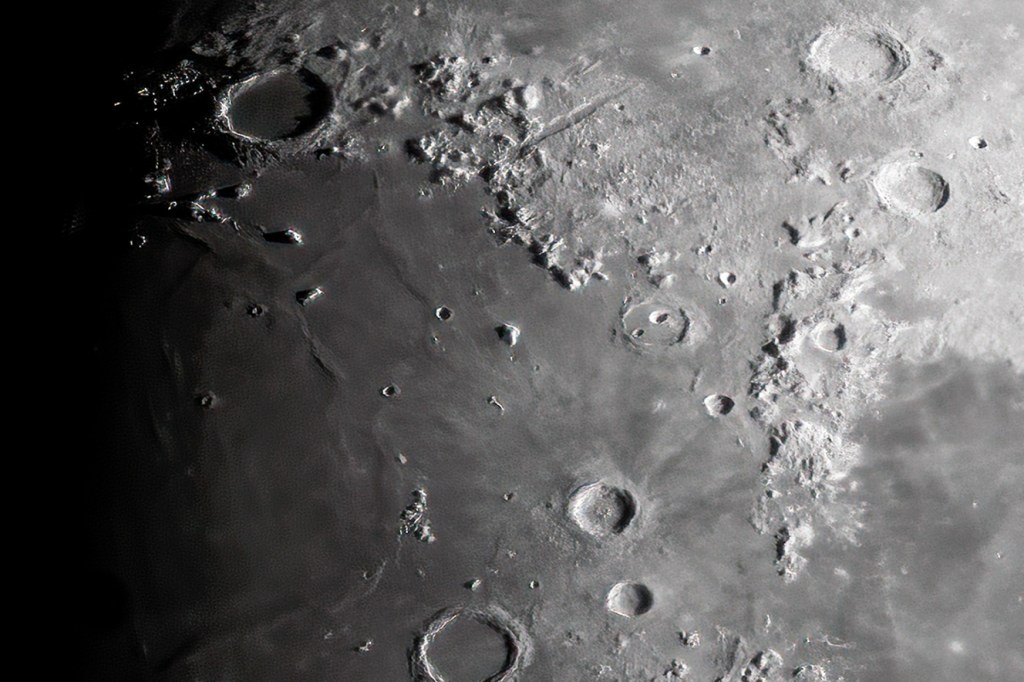
The moon is Earth’s closest neighbor. Look up! You can see it in the night sky. Sometimes, you can see it during the day.
The moon is a large rock.
(Above) It is one-fourth the size of the Earth. The moon is covered with craters
crater
 STOCKTREK IMAGES/GETTY IMAGES
a large hole in the ground
(noun)
Some lakes, like Canada's Clearwater Lakes, are formed by ancient craters.
. Craters are formed when objects hit the moon’s surface.
STOCKTREK IMAGES/GETTY IMAGES
a large hole in the ground
(noun)
Some lakes, like Canada's Clearwater Lakes, are formed by ancient craters.
. Craters are formed when objects hit the moon’s surface.
The moon has eight phases.
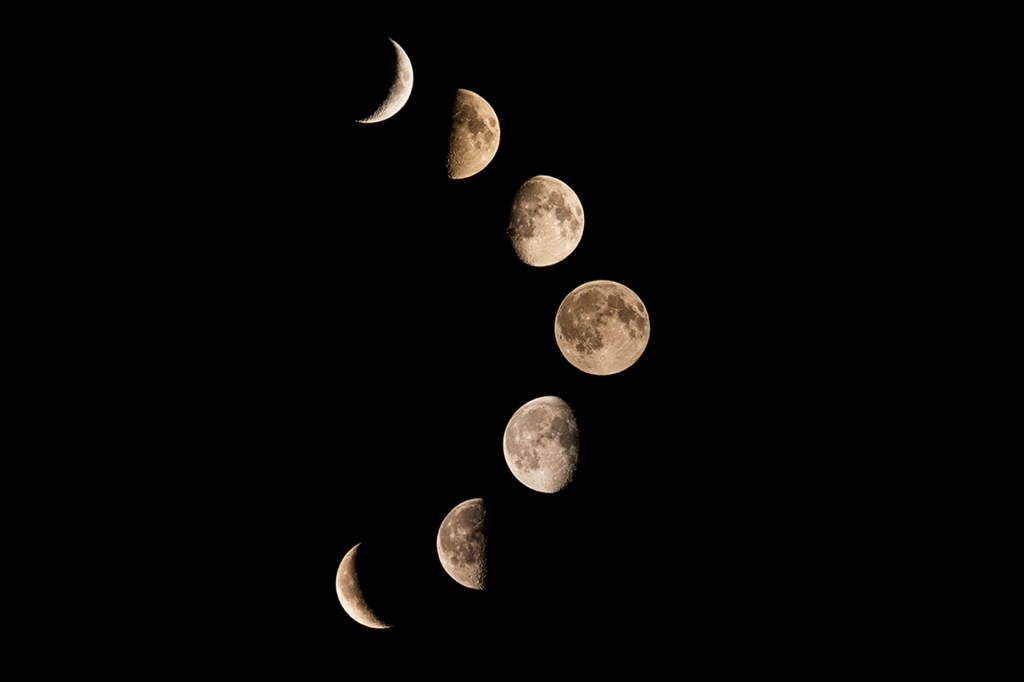
The moon seems to change shape. Its shape depends on how it lines up with the Earth and sun. It gets its light from the sun.
The moon orbits the Earth.
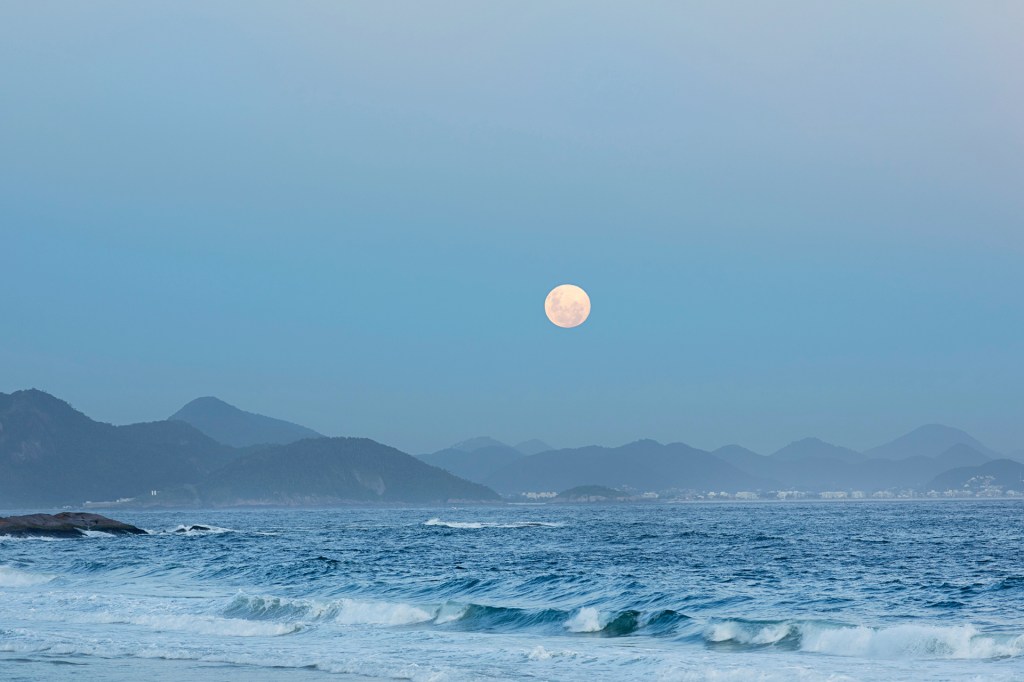
It takes 27 days for the moon to orbit
orbit
 MICHAEL DUNNING—GETTY IMAGES
to travel around something
(verb)
Many satellites orbit the Earth.
, or travel around, Earth. Its gravity pulls on Earth. This causes tides. Oceans have high tides and low tides each day.
MICHAEL DUNNING—GETTY IMAGES
to travel around something
(verb)
Many satellites orbit the Earth.
, or travel around, Earth. Its gravity pulls on Earth. This causes tides. Oceans have high tides and low tides each day.
People explored the moon.
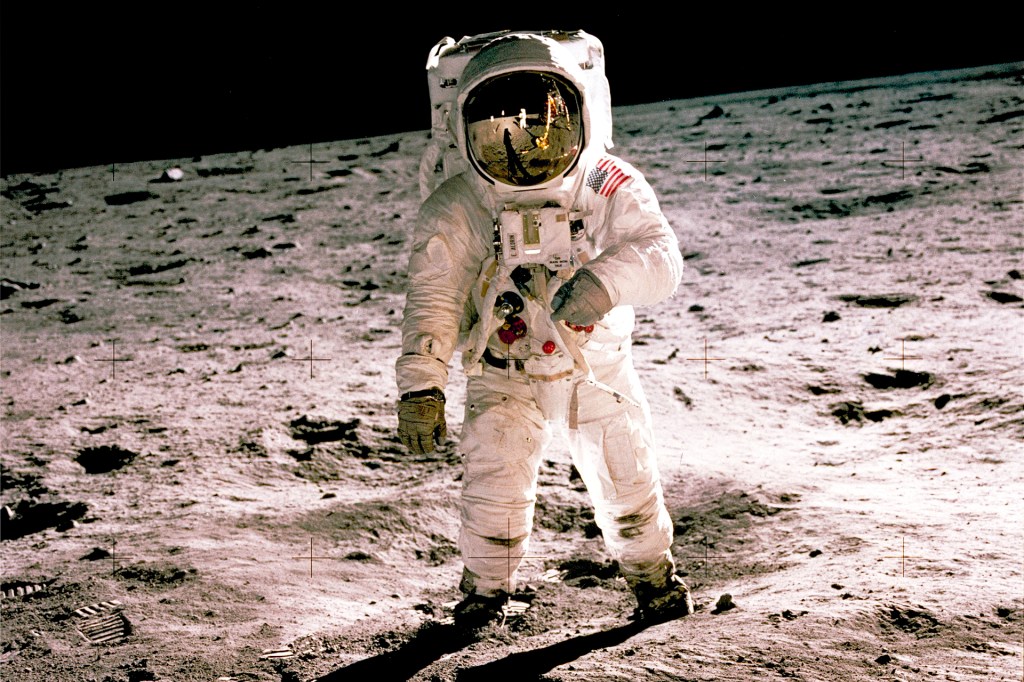
Neil Armstrong and Buzz Aldrin (pictured) were the first people on the moon. It took their spacecraft three days to get there.
Did You Know?
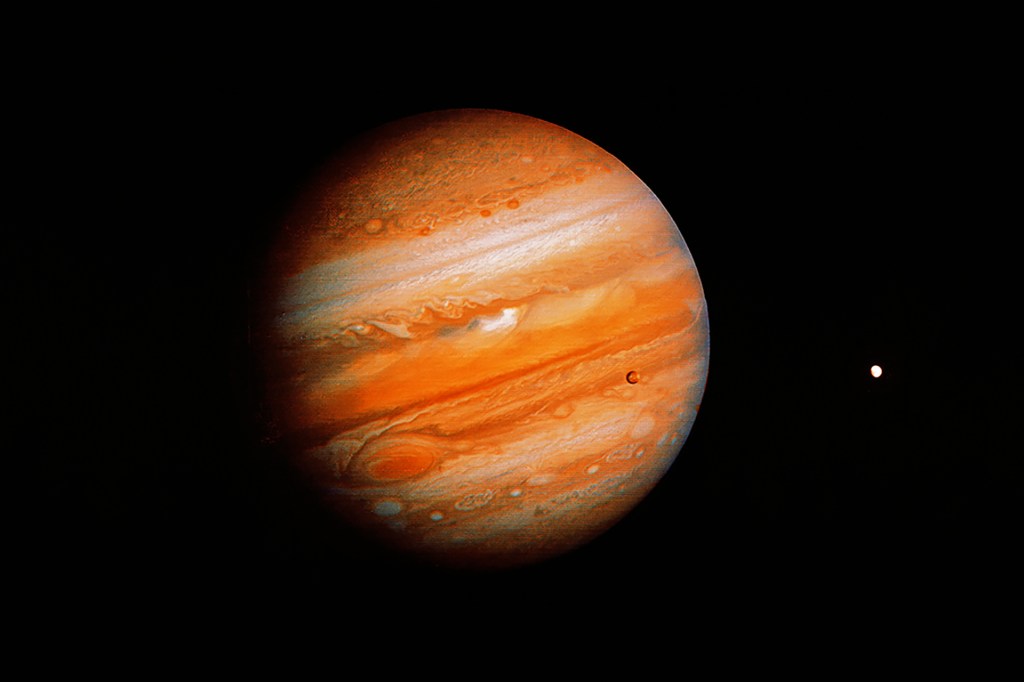
Other planets have moons too. Some have many moons. This is Jupiter. It has 79 known moons. There are more than 200 moons in the solar system.












